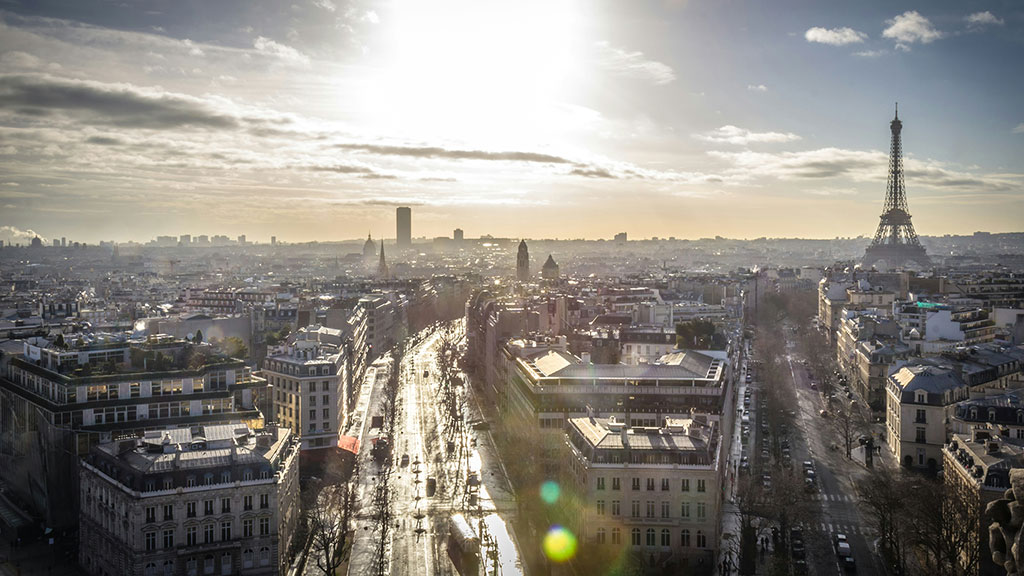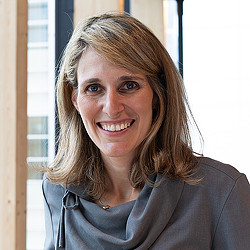Trends to Look for at the 2024 Summer Olympics and Paralympics
June 27, 2024 | By Tayomara Gama
How Paris 2024 is achieving more with less, and the trends shaping the Games wide open.
The sports industry is undergoing significant and exciting changes across all levels, including with sports venue design. In our Design Forecast 2024, we predicted that the perimeters separating arenas, stadiums, and cities will dissipate to create 24/7, walkable districts. We also predicted that dedicated facilities for women’s sports will continue to gain traction around the world, with the rising success of programs like the Women’s World Cup.
As a London resident, I’m excited to be able to see the Paris 2024 Olympic and Paralympic Games up close, and to see how the Games and the City of Paris have embraced some of these trends. As a firm believer in sport as a catalyst for positive change, I advocate for the transformative power of sport, design, and good intentions to change society for better.
This year’s Games will be unique for the fact that there will be no formal Olympic and Paralympic Park — the organisers will instead integrate the events into the entire city. This approach aligns with the Olympic and Paralympic spirit, promoting equity, connectivity, and community.
It also fits with the city of Paris’s focus on being a 15-minute city, which aims to ensure all citizens have basic facilities within a 15-minute walk, bike, or transit ride. Blending the Games into the urban landscape underscores the idea that sports and entertainment can play a role in the making of a well-balanced city.
This shift also speaks to the bigger design trends at work at this year’s Olympics and Paralympics around accessibility and inclusivity, sustainability, technological integration, and cultural celebration.
Here is a deeper dive into these four key trends:
1. Accessibility and Inclusivity
For the very first time, the Games will have an equal number of men and women competing, an amazing achievement showing measurable progress. Also new to this year, the Paralympics will share the same logo as the Olympics, symbolising the unity and equal status of all athletes regardless of their ability. These represent significant milestones that are setting an important tone for the games around accessibility and inclusivity.
As Paris prepares to welcome the athletes, it is also planning to host 15 million visitors, including 350,000 with disabilities. Notable progress includes the accessible Olympic and Paralympic Village and plans to increase the number of wheelchair-accessible taxis.
The urgency of the Games has spurred efforts to improve accessibility across public spaces, with renovations to bus shelters and enhancements at airports. Whilst the Metro system remains largely inaccessible, with only one fully accessible line, temporary solutions like shuttles will be provided during the major event. To prepare for potential discriminatory commentary or attitudes, companies are training employees in disability awareness.
Ultimately, there is a significant difference between creating a new district, as seen in London in 2012, and making improvements to an entire historic city, as we are witnessing this year. This approach is sustainable and continuous but presents greater challenges, which I believe will be worthwhile in the long run. Whilst London set a high standard by rejuvenating a district on the city’s outskirts, Paris is taking a unique approach by integrating the show into all parts of the city.
The true legacy of the Games will unfold in the coming years as various projects take shape that will improve the quality of life for residents. For example, the city plans to install underground electricity lines and redevelop the Canal Saint Denis. The 2024 Olympic and Paralympic Village (which will house the athletes) will become a new residential and business district when the games are over. And efforts to clean up pollution in the Seine for the games will enable people across the region to enjoy new bathing areas from 2025 onwards as part of the city’s climate resilience plans.
2. Sustainability
As climate change impacts the built environment in increasingly severe ways, sustainable design has become a non-negotiable. As such, sustainability has become a central theme of the upcoming Summer Games, as organisers aim to deliver “the most responsible and sustainable Games in history.”
This entails rethinking circular models, opting instead for a regenerative approach that prioritises longevity and value retention. By prioritising products with minimal environmental impact, promoting ethical supply chain practices, and fostering a culture of responsible consumption, Paris 2024 aims to cut its carbon footprint by 50% compared to London 2012. The adoption of innovative waste management solutions, such as composting and material recovery, will divert waste from landfills and promote circularity in resource utilisation.
Furniture in the athletes’ village will be made from recyclable materials, such as beds made of cardboard. Attention to sustainability also extends to the food program with organisers emphasising “more local, more plant-based food.” To minimise emissions, athletes’ residences will use geothermal cooling instead of traditional air conditioning.
To minimise construction, many of the venues are temporary, retrofitted, and reusable. For example, a former electric factory has been converted into a “resident centre.” Additionally, the Champ de Mars, the park located at the foot of the Eiffel Tower, will become a temporary outdoor arena that will stage the beach volleyball and blind football events. The venue will be dismantled following the Games, restoring it as a place for community gatherings.
Paris 2024’s sustainability strategy will also promote social inclusion, support local communities, and foster economic development. For example, Seine-Saint-Denis — an area experiencing some of the highest unemployment and poverty rates in France — will benefit from cycling lanes and green public spaces, sports-related employment, and a variety of education, health, and inclusion initiatives. After the Games, operators will repurpose the Olympic and Paralympic Village into a new sustainable city district, with housing, offices, and shops, where nearly 12,000 people will live and work. And organisers are working with strategic partners to transform the 150,000 jobs created to organise the Games into lasting, inclusive employment opportunities.
By adopting sustainability and circular economy principles, the Paris Games will demonstrate how sport can drive environmental stewardship and social progress, inspiring future generations to embrace a regenerative approach to living and working.
3. Technological Integration
Advances in broadcasting and digital engagement will provide unprecedented access and interactive experiences for attendees and viewers of the activities.
AR and VR technologies will offer ways to watch and engage with events, bringing the action closer to global audiences. For attendees, immersive digital installations with AR features will offer a seamless blend of the physical and virtual realms.
Live data and new technologies will also give fans a detailed display of athletes’ performances. Dynamic, data-driven graphics and multiple camera angles for replays will transform the viewer experience, immersing them in their favourite sports.
With groundbreaking broadcast innovations, Paris 2024 will have over 11,000 hours of coverage enhanced by cinematic lenses, cloud-based technology, UHD HDR video, and immersive audio. These advancements aim to deliver a highly detailed and engaging viewing experience, vividly capturing athletes’ performances and emotions.
Additionally, cloud technology will increase efficiency, reduce the broadcast footprint, and enable remote operations, making the Games more accessible and sustainable.
4. Cultural Celebrations
The city of Paris is leaning into the Games to celebrate its French and European identity. The whole world will celebrate ““égalité, liberté, and fraternité”!
We look forward to the beach volleyball temporary infrastructure in front of the Eiffel Tower, and the use of signature venues such as the Adidas Arena, Stade Roland Garros, Stade de France, Le Parc (des Princes), and so many others.
Organisers have pulled out all the stops to create a grand spectacle that embodies the essence of Paris whilst setting new standards for Olympic and Paralympic excellence. Expect vibrant colours, intricate patterns, and symbolic motifs that showcase multiculturalism and collaboration, reflecting France’s artistic heritage and the cultural identities of participating nations.
Paris is the perfect setting for a celebration of equity, sustainability, and technological integration because of its reputation as an art, culture, and style centre that blends tradition and innovation. As a showcase for human achievement, these Olympics and Paralympics have the opportunity to showcase the transformative potential of major events as catalysts for sustainable urban development and positive change.
For media inquiries, email .

